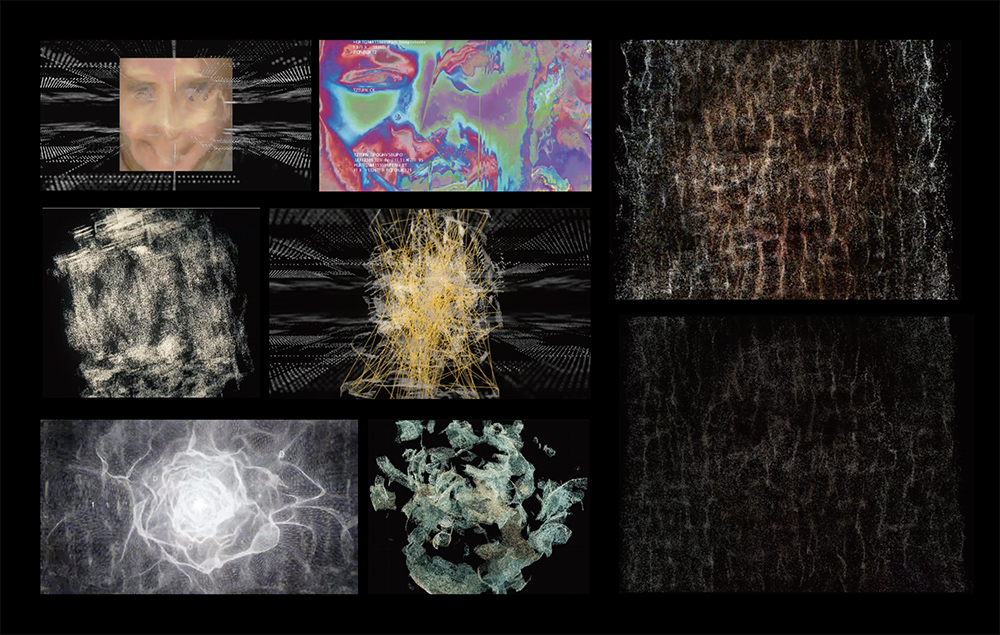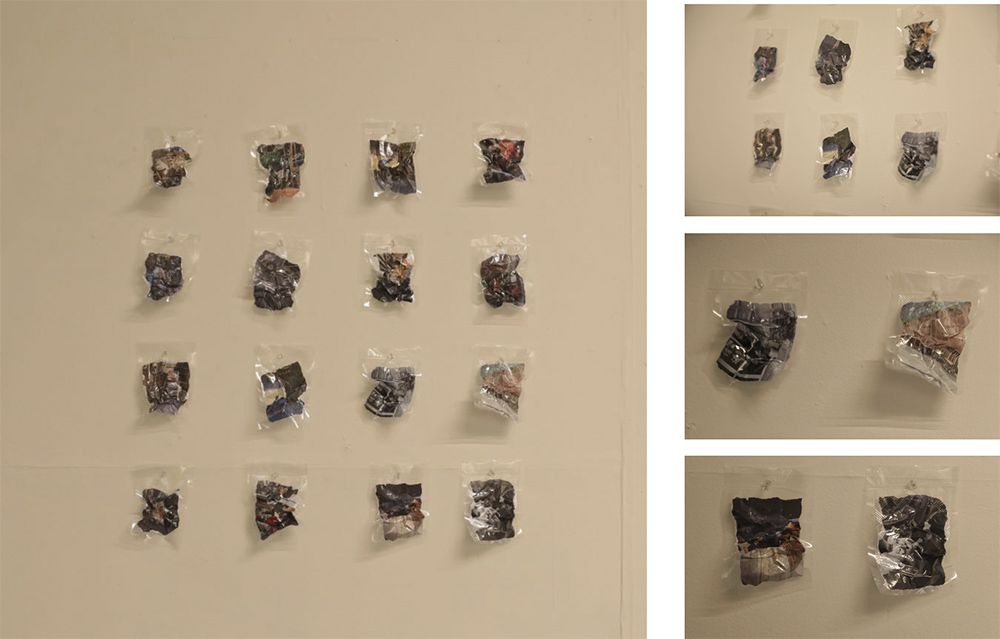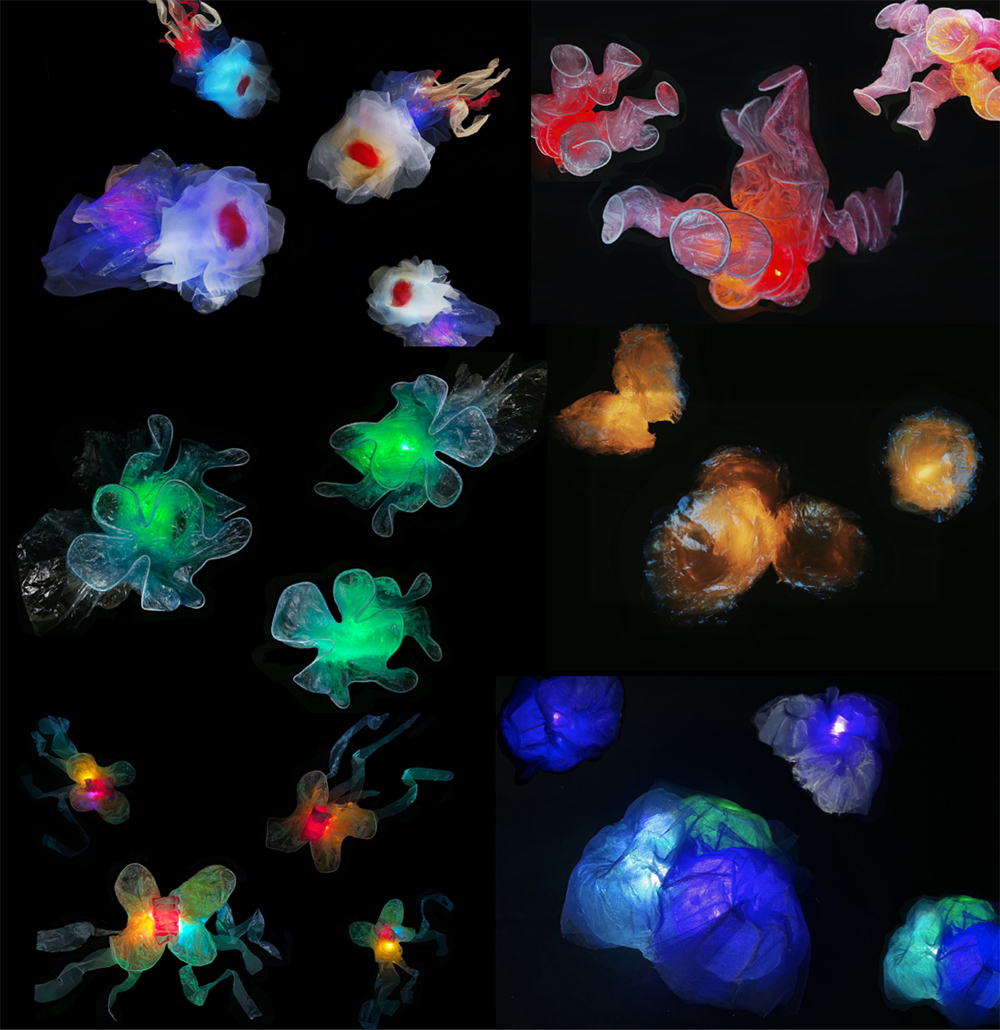Yixuan Yang’s work hums like a signal half-caught in the static–elusive, spectral, and unforgettable. A rising voice in contemporary lens-based and installation art, Yang’s practice pulses with quiet intensity. Born in Wuhan in 2000 and now based in Edinburgh, her work spans the cultural geographies of China and the UK, but it never fully settles anywhere. Instead, it drifts–through memory, absence, through the space between presence and disconnection.
Her academic path reflects this interplay of structure and softness: a BFA at Central South University and an MSc in Design and Digital Media at the University of Edinburgh. But if her training suggests precision, her work moves in the opposite direction–toward rupture, toward texture, toward echo. She crafts not statements, but atmospheres.
Her piece The Long Farewell cuts deep. Rather than presenting Alzheimer’s through clinical detail, Yang conjures the illness as erosion. Language frays. Faces blur. The self unravels slowly, painfully, beautifully. It is structured in three phases: language, recognition, self–but Yang undercuts any neat progression. The phases leak into each other like watercolor on wet paper. The result is not documentation but dissociation: the unsettling realization that memory doesn’t vanish all at once, but dissipates in fragments.
She doesn’t tell us what it means to forget. She really just shows us what it feels like to be forgotten. The images, printed on C-type at 30 x 30 x 5cm, offer no refuge. Their square rigidity holds within it visual collapse: identity slipping under the surface like breath held too long.
This is art that holds your gaze just long enough for you to feel it slip away.
In the Quiet Between is one of Yang’s most conceptually loaded works, and one of her most tactile. 9.99 cubic feet of soil is carried by hand from her birthplace in China to Edinburgh. Not ten. Not complete. A fraction short of roundness. It becomes an anti-monument: origin uprooted, carried, displayed. The work speaks to the immigrant experience not through spectacle, but through weight–literal and emotional.
Soil is not simply earth. It’s inheritance. Displacing it is a form of quiet violence. Yang stages this dislocation as reunion and rupture. The gesture is intimate, laborious, and almost absurd in its devotion. And that absurdity–its silent seriousness–is precisely what makes it resonate.
Similarly, in The Soft Remains, Yang collects old photos, trinkets, and suspended fragments of memory, vacuum-sealed in a fragile casing. The irony of preservation is not lost on her: even frozen memories shift. Faces soften. Sharp lines become ghosted outlines. Nothing stays. Even stillness fades.
The title does the work justice. These aren’t just remains–they’re soft. Fragile. Still aching. Still here.
If Yang’s earlier pieces dwell on memory and family, her recent works drift toward planetary themes, without abandoning her quiet tone. A Dream of Breath is a prime example. Set in the aftersmoke of a vanished forest, the piece moves between ecological grief and speculative wonder. Microalgae shimmer on the edge of perception. Homes breathe. Air feels sentient. The work does not scold. It invites. A vision of survival, dreamed rather than engineered.
She uses digital media not for its slickness, but for its ghostliness. 3840 x 2160 resolution turns hyperclarity into unreality. The images aren’t clean; they’re clinical. Like an X-ray of hope. Yang transforms digital space into something tactile–a place to imagine again.
Here, light is both tool and theme. Carbon is not explained, but felt. The green glow of microalgae becomes a whisper for regrowth, for care. She doesn’t instruct; she asks: what if we breathed differently?
This Tooth Becomes a Porpoise is one of Yang’s most tender and surreal gestures. A dislodged tooth becomes a drifting porpoise–a creature symbolic of her Chinese heritage, now endangered and floating in unfamiliar tides. The metaphor is gentle but charged. The porpoise’s shape echoes back in teeth, in memory, in loss.
It doesn’t map a literal migration but evokes a tenderness stretched by oceans. A porpoise is not a symbol here. It’s a feeling. The work suggests that even dispersed memories, like scattered teeth, retain their emotional charge. There’s no grand narrative. Just objects suspended in emotional saltwater.
Yang turns absence into a medium. The work doesn’t resolve. It floats.
What unites Yang’s disparate works is not subject matter, but approach. Her lens-based work, though high-resolution and technically refined, never flaunts its digital sharpness. She blurs intentionally. She slows time. Her transitions are soft, barely visible. The viewer must lean in. She makes work that listens back.
The recurring use of C-type prints gives her work a muted gloss–a formality that paradoxically holds fragile content. These are not relics. They are weathered objects. Delicate things caught mid-fade.
While trained in both Eastern and Western traditions, Yang does not collapse them into some hybrid aesthetic. Instead, she stages them in tension. The ancestral weight of soil vs. the hyper-contemporary fragility of video pixels. The emotional heft of absence vs. the illusion of preservation.
Even her exhibition titles reflect a sensibility of rupture and longing: Fragmented Wholeness, How Carbon Was Forgotten, You Were Disconnected–To Be Found Differently. These aren’t themes. They’re coordinates. She charts emotional geographies. Places where personal grief intersects with collective forgetting.
Unlike the confessional maximalism of artists like Sophie Calle, Yang resists autobiography as spectacle. Her mourning is subtler, quieter. She doesn’t tell you what she’s lost. She hands you the soft outline and lets you feel around it.
Her recent Bronze Award at the CADA Japan Concept Art Awards confirms what curators across Europe and China have already noted: Yang is not simply emerging. She is already a major voice. Just not one that shouts.
Yang’s practice is built on resonance, not resolution. Her works do not declare; they tremble. They ask us to listen for the glitch, the static, the pause between signal and silence. In a cultural landscape obsessed with immediacy and spectacle, her work moves differently. It delays. It breathes.
In her world, memory is a liquid archive. Distance is not absence, but potential. And to belong is not to arrive, but to keep moving. Yixuan Yang doesn’t just make art. She really tends to it. She listens to what slips through, and gives it form. In a world demanding clarity, she offers static. And teaches us to listen.



